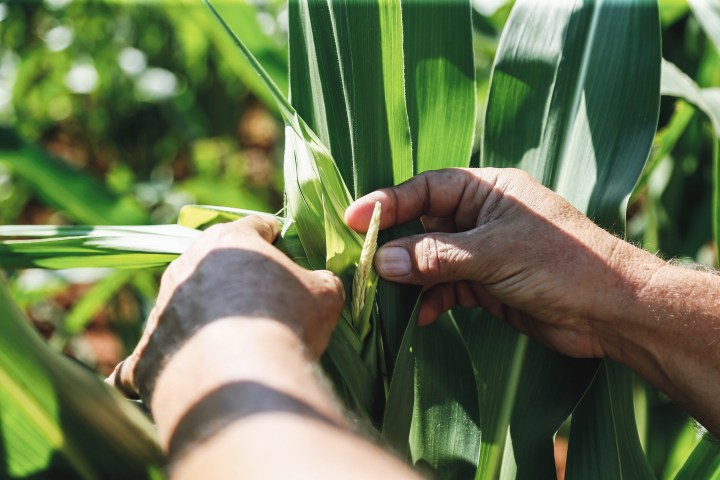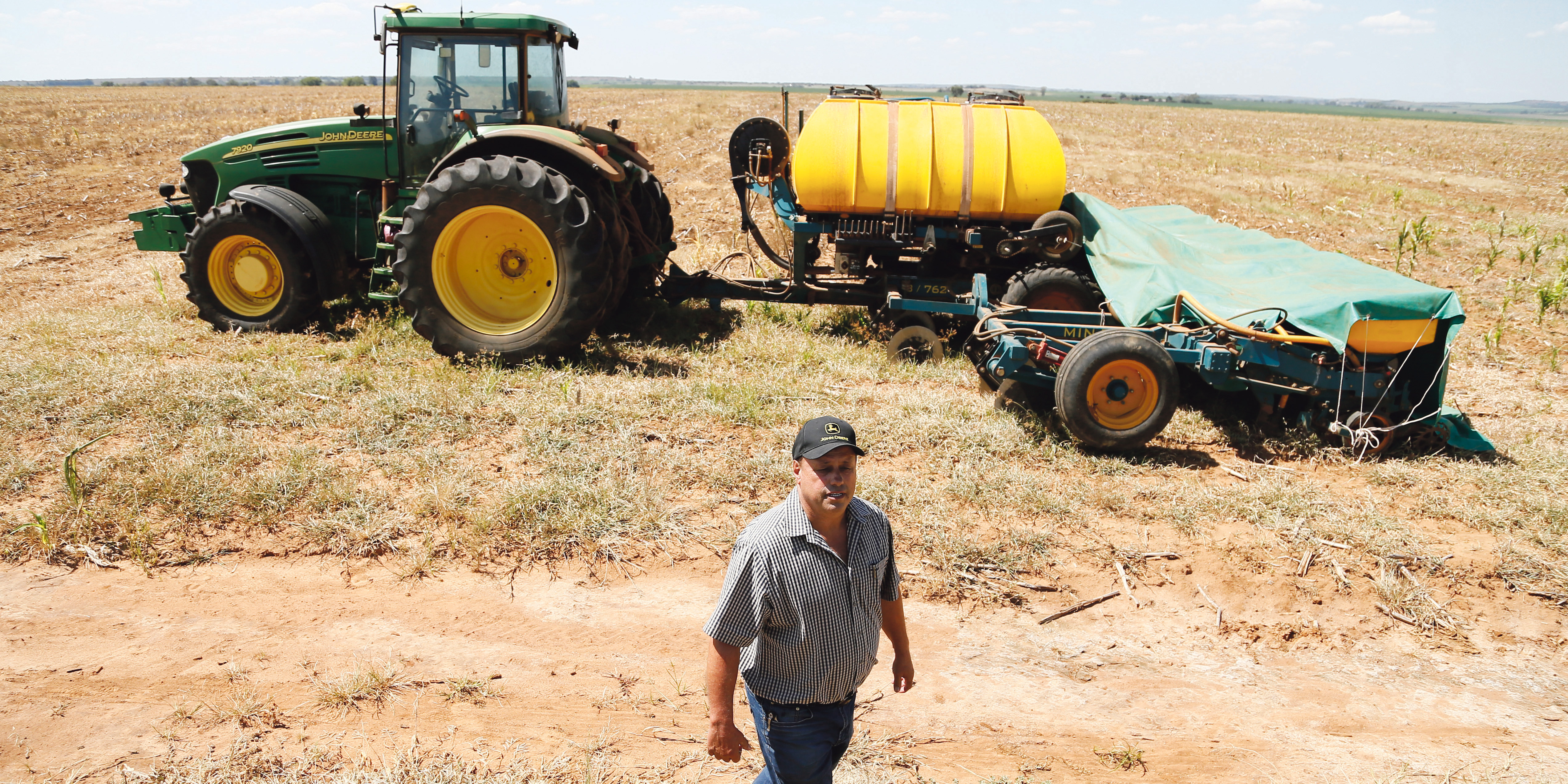Business Maverick
Erratic weather and power pose risk to South Africa summer crop yields

Too much rain makes no grain, while too much heat means less to eat. This erratic combination has taken root in the current summer growing season in South Africa. Throw in Eskom’s woes, and yields may suffer at a time of elevated food inflation.
‘First it was too wet, then it was too dry,” North West commercial farmer Tom van Rooyen told DM168 as he surveyed his crops on a recent scorcher of a day.
Van Rooyen has planted maize and dry beans. A 100-hectare section of his farmland slated for beans has been left uncultivated because it was too wet at sowing time.
South Africa’s summer season for crucial crops such as the staple maize got off to an exceptionally wet start, with heavy rainfalls linked to the La Niña weather system, a periodic cooling of the eastern Pacific that often brings drenching rains to southern Africa and drought to other regions.
The rains at the start of this summer have been welcome but are also a mixed blessing.
“Because of that, the roots are too shallow,” Van Rooyen explained. That leaves the plants vulnerable to rainless spells as moisture evaporates near the surface, leaving roots literally high and dry.
Since Christmas, much of South Africa’s grain belt has been seared by heatwaves. For dry land farmers such as Van Rooyen, who does not irrigate, each blue sky day eats into his yields.

Tom van Rooyen’s 100-hectare section of farmland that he keeps for beans has been left uncultivated because it was too wet at sowing time. Photo: Felix Dlangamandla
Still, other industry sources say the moisture levels in the soil should help the crop overall to weather the dry patch.
“Soil moisture should be sufficient to sustain the crop,” Wandile Sihlobo, chief economist at the Agricultural Business Chamber of South Africa, told DM168.
Meanwhile, farmers with irrigation – whose fields account for about 18% of the maize crop – are battling as rolling blackouts wreak havoc.
“The area under irrigation is strained because intense load shedding coincided with the heatwave. And those areas are feeling the impact,” Sihlobo said.
And power shortages surge like a bad current through the agricultural production chains.
“During harvest time, you can’t take maize to the silos during load shedding and the millers can’t mill,” said Van Rooyen.
Poultry producer Astral Foods said on 25 January that it expected its earnings for the six months to 31 March 2023 to fall as much as 90%. Aside from record-high feed costs, the company cited “devastating levels of load shedding and the general decay of municipal infrastructure”.
Even hi-tech solutions are not immune. Van Rooyen, like a swelling number of South African commercial farmers, practises “precision farming” which uses GPS technology to enable precise targeting of inputs such as seed and fertiliser.
This lifts yields and profits and GPS is not reliant on Eskom. But the utility’s performance can still throw spanners into the works.
“If you are really dug into precision farming, there is also data involved which is reliant on the GSM or cellphone network,” Louis Strydom, marketing director for Nutriology® SA at Omnia, which provides precision farming services, told DM168. Such networks, especially in rural areas, are vulnerable to outages linked to rolling blackouts.
South African farmers have had bumper crops recently thanks to La Niña and innovations such as the adoption of precision farming.
South Africa’s maize harvest in 2022 was just shy of 15.4 million tonnes, almost 6% lower than the record 16.35 million tonnes reaped the previous season and the third-highest on record. Tractor sales in South Africa in 2022 hit a 40-year high as prices and good harvests provided farmers with capital for investment.
On 26 January, the official Crop Estimates Committee gave its first estimate of the amount of land devoted to summer crops – in a slightly delayed fashion because of rolling blackouts. It showed that the area planted for maize is estimated to be 3% lower than last year, while the area planted for soya beans is up more than 18%.
The input costs for soya are lower than for maize and that would explain this state of affairs since such costs have been soaring. On the maize front, the estimate of the area planted is more than 6% lower for white maize, which is the staple, while plantings for yellow maize used mostly for animal feed is up 1.9%.
The dearth of rains in January raises question marks about the size of the harvest. One consequence could be renewed price pressures at a time when food inflation was showing signs of peaking.
Food inflation in South Africa slowed to 12.4% in December from 12.5% in November and global food prices have been breaking record levels.
South African white maize prices have been falling, according to data compiled by industry group Grain SA. The January white maize contract has dropped to below R4,600 a tonne from more than R5,400 in late November. But concerns about yields could send prices higher, as could the estimates that less land has been dedicated to the crop this season.
Observers like Sihlobo remain cautiously optimistic.
“It’s safe to still say that South Africa could have a decent summer crop, but the possibility of the crop being slightly lower than the good harvests of the past three years has increased,” he said.
And La Niña is not forever, with forecasts now suggesting that its polar opposite El Nino – a warming of tropical Pacific waters – could form later this year. El Niño typically heralds drought conditions in southern Africa and the previous one was blistering. The 2015/16 South African maize crop was only 8.2 million tonnes.
Combine that with Eskom’s inability to provide reliable power – along with the ongoing decay of the road, rail and port networks – and there could be a perfect storm brewing that will be bad news for South African farmers and consumers alike. DM168




















 Become an Insider
Become an Insider
Comments - Please login in order to comment.